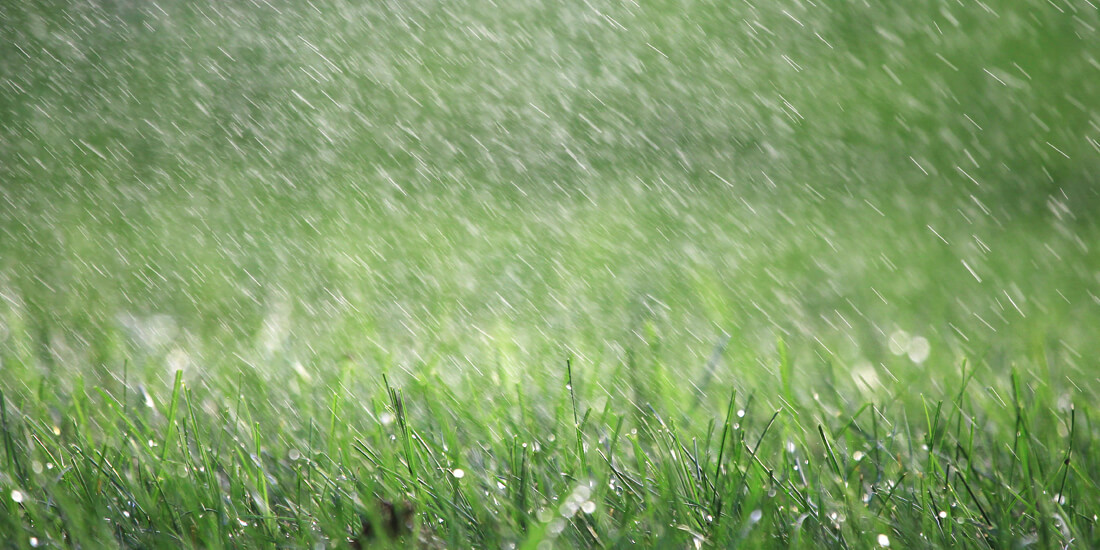Total Washout: Will my grass seed germinate in heavy rain?
Whilst the British summer is busy buffering, in some parts of the UK we’ve been treated to 3 months of rain – so what does this mean for seed that you’ve recently sown?
Well, it really depends on how well your soil drains – in most cases, the rain will drain away into your soil and do your watering for you, and your
grass seed will be largely unharmed. However, if you find your grass seed is sitting in a puddle – this could risk the rate at which your seed germinates, or it may not germinate at all.Most soils are free draining; if you find that rain doesn’t drain away easily, your lawn may already be suffering from compaction or may not have an adequate draining system underneath.So, if you are finding that this is an issue, there are a few steps that you can take to help
floodproof your lawn to prevent it from happening in future. Using the
correct grass seed for problematic soils will also help your grass seed germinate in heavy rain, and we also have a few tips you can use to help improve the situation if the weather doesn’t!
1. Aerate your lawn to help grass seed germinate
Aeration to most may seem like an out-there concept for the average homeowner, but it does greatly help the dynamics and appearance of your lawn. Grass is a living thing, and soil is its greatest support system. If your soil is hard, dry and compacted, it will struggle to drain.
Aerate your lawn using an aerator machine, or if you have a small lawn, use a pitchfork to spike the lawn and alleviate this issue.
2. Add some top soil and sand
If you have particularly problematic soils, e.g. heavy clay, adding some topsoil and sand will help to improve the top layer of soil for where you will be sowing your seed. We also have a great grass mix that contains
grass seed that is deep rooting; this will help to improve the soil structure of your heavy clay soils and allow water to flow freely.
3. Minimise the risk
If you have gutters or drains that are close or lead to your lawn, it is a good idea to clear these out to ensure there isn’t a build-up of water that may then end up leaving your lawn sodden. Get rid of any leaves or debris – not the most pleasant job in the world, but one that will definitely help!If rain puddles aren’t draining from your lawn, you can manufacture some runoff points, especially if your lawn does not have any slopes. Directing the water to more stable parts of your garden, e.g. patio or concrete, will give your grass some breathing space.While slopes are useful in this situation, too many lumps and bumps in your lawn will cause water to collect in one area. By starting off your
seeding with a level seedbed created by raking with a spring-tined rake, you can help to avoid this happening in the future.Even though grass seed is resilient stuff, if exposed to deep levels of water for an extended amount of time, the successful outcome of how well it will germinate will decrease - meaning it will
take longer to grow! By taking the above steps, you can help future-proof your lawn and protect your grass seed if this wet weather continues!For further reading, we have a
grass seed help & advice area and a
frequently asked questions section that includes questions our customers have commonly asked us.
